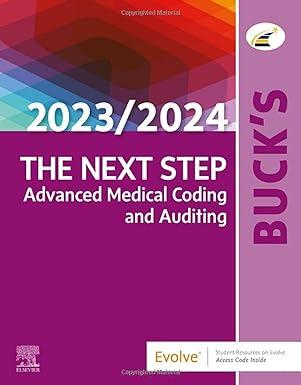


1) Stark Industries had a $700 credit balance in Allowance for Doubtful Accounts on December 31, 2020, before the current year's provision for uncollectible accounts. An aging of the accounts receivable revealed the following: Estimated Percentage Uncollectible Current Accounts $120,000 1% 0-30 days past due 12,000 3% 31-60 days past due 10,000 6% 61-90 days past due 5,000 12% Over 90 days past due 8,000 30% Total Accounts Receivable $155,000 Instructions (a) Prepare the adjusting entry on December 31, 2020, to recognize bad debts expense. (2) (b) Assume the same facts as above except that the Allowance for Doubtful Accounts account had a $500 debit balance before the current year's provision for uncollectible accounts. Prepare the adjusting entry for the current year's provision for uncollectible accounts. (2) Date Particulars PR Debit Credit What is the balance of Allowance for Doubtful Accounts on December 31, 2020? Natalie has been approached by one of her friends, Curtis Lesperance. Curtis runs a coffee shop where he sells specialty coffees and prepares and sells muffins and cookies. He is very anxious to buy one of Natalie's fine European mixers because he would then be able to prepare larger batches of muffins and cookies. Curtis, however, cannot afford to pay for the mixer for at least 30 days. He has asked Natalie if she would be willing to sell him the mixer on credit. Natalie comes to you for advice and asks the following questions. 1. Curtis has given me a set of his most recent financial statements. What calculations should I do with the data from these statements? What questions should I ask him after I have analyzed the statements? How will this information help me decide if I should extend credit to Curtis? 2. Is there another alternative to extending credit to Curtis for 30 days? 3. If, instead of extending credit to Curtis for 30 days, I have Curtis sign a promissory note and he is unable to pay at the end of the agreement term, will having that signed promissory note really make any difference? 4. I am thinking seriously about being able to have my customers use credit cards. What are some of the advantages and disadvantages of letting my customers pay by credit card? Are there differences in the types of credit cards that my customers can use? The following transactions occur in April and May 2014: April 1 After much thought, Natalie sells a mixer to Curtis for $1,050 (the cost of the mixer was $553). Curtis signs a two-month, 7.5% promissory note. Curtis can repay the note at any time before the due date, with interest accruing to the date of payment. 30 Curtis calls Natalie. He expects to pay the amount outstanding in the next week or so. Natalie receives a cheque from Curtis in payment of his balance owing plus interest that has accrued. May 15 Instructions: Read the case in the image above. a) Respond to Questions 2, 3 and 4. (on next page.) b) Create the journal entries for the May 15th transaction. (4) Date Particulars PR Debit Credit Section B Response: 2.( /2) 3. (/2) 4. ( /4) Advantages (2) Disadvantages (2)









